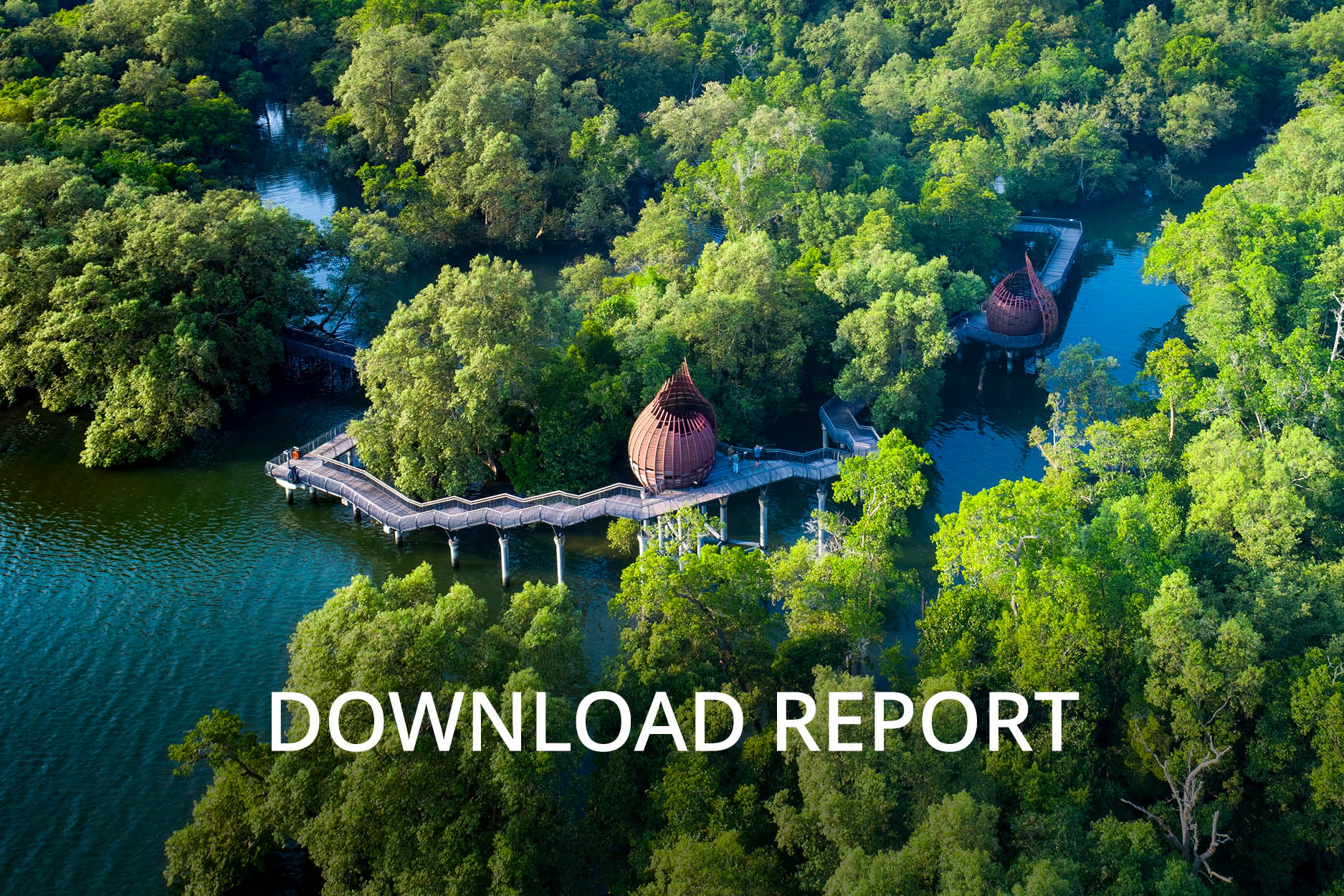Investment Approach
Our investments are driven by our views of the trends shaping societies.
Since our incorporation in 1974, Temasek has transformed from a Singapore holding company into a global investment company. In the 2000s, we stepped out and grew with an emerging Asia. In 2010, we embarked on our strategy to be a global investor by the end of 2020, and expanded beyond investing in emerging markets and Asia, to developed markets in the US and Europe.
In 2019, Temasek developed our T2030 strategy — our 10-year roadmap to guide our strategic planning, capability building, and institutional development initiatives for this decade. As part of our T2030 strategy, we focus on constructing a resilient and forward-looking portfolio — one which is able to withstand exogenous shocks and perform through market cycles, while at the same time capitalising on growth opportunities with the potential for sustainable returns above our risk-adjusted cost of capital over the long term.
Portfolio Composition
Structural Trends
To guide our construction of a portfolio that is resilient to shocks and relevant for the future, our investment activities are aligned to four structural trends.
Digitisation and Sustainable Living are megatrends with a pervasive impact across all sectors and on the business models of incumbent and emerging businesses. Future of Consumption and Longer Lifespans reflect structural shifts in consumption patterns and growing needs arising from population growth and longer expected lifespans. These trends are interconnected, transcend sectors and countries, and persist through economic cycles.
We continue to align our portfolio with such trends. We invest in companies that directly enable, drive, and benefit from these trends.
In addition, we deploy capital to catalyse solutions that can enable companies to transition to a more sustainable future, tap on opportunities to invest in future growth sectors and business models, and encourage enterprises to transform through efforts in innovation.
We set aside a portion of our investment capital to back innovations and disruptive technologies at pre-commercialisation stages. We are cognisant of the risks and challenges these early-stage companies face and accept the binary risks that come with investing in them.
Listed and Unlisted
Our portfolio comprises both listed and unlisted assets, including our investments in funds. The unlisted portfolio has grown steadily over the years as we invested in attractive opportunities in the private markets and benefitted from the increase in the value of our unlisted assets.
As at 31 March 2024, 48% of our portfolio was in liquid and listed assets, and 52% was in unlisted assets and funds.
We value our unlisted investments at book value less impairment. Our unlisted portfolio, including our private equity co-investments and investments in private equity funds, generated returns of 9% per annum over the last decade and more than 10% per annum over the last two decades, delivering higher returns than our listed portfolio.
Marking our unlisted portfolio to market would provide S$31 billion of value uplift which is approximately 15% of our unlisted portfolio as at 31 March 2024.
Unlisted Portfolio (%)
(as at 31 March 2024)
1 Includes only key portfolio companies headquartered in Singapore.
Our unlisted portfolio is well diversified across geographies and sectors.
Unlisted Singapore companies include mature companies such as Mapletree, PSA, and SP Group.
Our asset management businesses include Seviora Holdings, Pavilion Capital, and Vertex Holdings. Our asset management businesses manage around S$83 billion in assets, which include third-party capital as well as our own capital.
Investments in private equity and credit funds have enabled us to gain deeper insights into new markets and sub-sectors of specialisation while providing co-investment opportunities.
The rest of our unlisted portfolio comprises direct investments in private companies. Our investments include Ant Group, AS Watson, Ceva Santé Animale, Element Materials Technology, Manipal Health Enterprises, Mastronardi, Schneider Electric India, and Topsoe.
Our unlisted portfolio offers us liquidity through divestments; steady dividends from mature companies; and distributions from the high-quality portfolio of funds we have built up over the years. The funds are well diversified across geographies, sectors, and vintages. We also achieve liquidity from our unlisted portfolio through public listings. For example, DoorDash, Gracell Biotechnologies, Intapp, Medanta, PB Fintech, and Zomato have listed in the past five years.
Early-Stage Investments
Our focus as an investment company is to invest in innovation and growth. This includes investing in early-stage companies to identify potential winners early; to keep abreast of the latest technologies and innovations; and to drive portfolio development efforts. We also engage closely with portfolio companies on their efforts to assess potential disruption risks and to identify transformation opportunities arising from these new technologies.
We are cognisant of the risks and challenges these early-stage companies face and accept the binary risks that come with investing in them. However, some of these companies also have the potential to achieve significant growth over time and deliver outsized returns.
We manage our early-stage risk by appropriate sizing and diversification. We typically invest smaller amounts at the time of initial investment, with a view to increasing our stake if the company demonstrates successful de-risking. In addition, we cap our exposure to this segment to 6% of our overall portfolio as part of our risk management framework. Currently, our early-stage investments account for under 6% of our total portfolio, with about half through direct investments and the rest through venture capital funds.
Integrating ESG Across Our Investments
We apply an Environmental, Social, and Governance (ESG) framework across our entire investment process. This includes investment due diligence to ensure that the opportunities we consider align with our objectives for sustainability and good governance. Post-investment, we engage investee companies to advance sustainability practices, including strengthening climate targets and transition plans, promoting inclusive workplaces as well as workplace health and safety, and fostering good governance.
Investment Framework and Risk-Adjusted Cost of Capital
Our investment discipline is centred around intrinsic value and our risk-return framework. This framework forms the basis of our investment decisions, capital allocation, performance measurement, and incentive system.
Our risk-adjusted cost of capital (RACOC) framework compares the relative attractiveness between investment opportunities. For each investment, we conduct a bottom-up intrinsic value analysis, with expected returns evaluated against a RACOC that we derive using the capital asset pricing model.
Each investment’s RACOC takes into account country risk, industry risk, and capital structure. Investments in riskier sectors or markets will have higher costs of capital. We reflect additional risk by adding to the RACOC an illiquidity risk premium for unlisted investments and a venture risk premium for early-stage investments.
We assess our performance by measuring our TSR against our overall RACOC, which is the weighted average RACOC across all our individual investments.
S$ Total Shareholder Return Relative to Risk-adjusted Cost of Capital (%)
(as at 31 March 2024)
1 TSR by market value takes into account changes in the market value of our portfolio, dividends we paid, and nets off any new investments made by our shareholder in Temasek’s shares.
2 Our risk-adjusted cost of capital accounts for different risks faced by our investments, and is derived using a capital asset pricing model. The risk-adjusted cost of capital is built bottom-up, and aggregated across all our investments.
3 TSR by shareholder equity takes into account the underlying profitability of our portfolio companies, realised returns from our investment activities, dividends we paid, and nets off any new investments made by our shareholder in Temasek’s shares.
S$ Total Shareholder Return Relative to Market Indices1 (%)
(as at 31 March 2024)
1 Temasek’s mandate is to deliver sustainable returns over the long term. These market indices are broad indices, including a wide range of stocks across different countries and industry sectors. The allocations of the indices across sectors and countries are typically based on the market capitalisation of listed stocks, and it is more commonly used for passive investing through Exchange-Traded Funds (commonly known as ETFs). Temasek’s portfolio composition is very different from these indices, especially as Temasek’s portfolio includes a proportion of unlisted assets. However, market indices provide useful broad reference points as to how the overall market had moved over time. Temasek has set out our performance against various indices, where there is a complete dataset available, to assist those interested in such comparisons.
2 The FTSE STI Index measures the performance of the top 30 companies listed on the Singapore Exchange.
3 The MSCI AC Asia ex-Japan Index measures the performance of large to mid-sized companies in Asia, excluding Japan.
4 The MSCI ACWI Index measures the performance of large to mid-sized companies in the developed and emerging markets.
We increased our internal carbon price from US$50 per tonne of carbon dioxide equivalent (tCO2e) in the financial year ended 31 March 2024 to US$65 per tCO2e starting from 1 April 2024. Our internal carbon price is applied to each investment to better assess the potential climate transition impact, thereby enabling a greater focus on the long-term climate resilience of our portfolio. We expect to progressively increase this to US$100 per tCO2e by 2030.
Investment Engagement and Stewardship
Against the challenges and uncertainties in our macro environment, companies have to be ever more agile and laser-focused on the development and execution of their strategies, in order to meet the expectations of their shareholders and other stakeholders.
As an investor and owner seeking to achieve sustainable long-term returns from our portfolio, Temasek stays committed to working with our portfolio companies, their boards, and leadership, to ensure a close alignment between strategy and performance, and returns and rewards. We seek to add value to our investee companies — where appropriate, we work together with these companies to enhance value through partnerships, innovation, growth strategies, and transformational possibilities.
As an engaged shareholder, we proactively promote good governance, ethical business practices, and compliance with applicable laws. We set clear expectations and exercise our rights through voting at shareholder meetings. We view voting and engagement as key levers that are essential to long-term value creation and have formed a dedicated Investment Stewardship function to augment that effort.
Capital Allocation
At the portfolio level, we set a three-year rolling capital allocation and divestment plan that is reviewed by senior management and approved by our Board annually. This plan guides our investment and divestment activities, and liquidity, to maintain a strong balance sheet.
We have full discretion as an owner and investor to reshape and rebalance our investment holdings as the situation warrants. From time to time, we may invest in or divest from selected positions based on our outlook and risk-return appetite. We may take concentrated positions, remain in cash, and/or use derivatives to hedge currency or protect against potential losses of our underlying investments.
Our investments are predominantly in equities. We adopt a long-term view of our investments and are not focused on short term volatility. We do not have targets for investing by asset class, country, sector, or single name. We manage our liquidity and balance sheet for resilience and investment flexibility.


